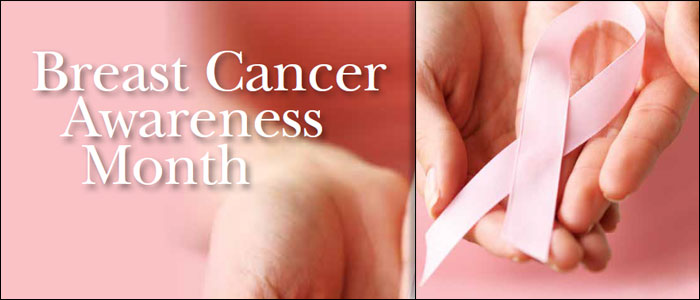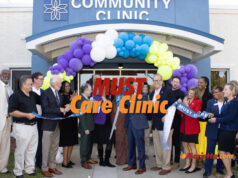Each October, cities around the world see an influx of the color pink: pink ribbons, pink T-shirts and pink bumper stickers urging you to “Save the Ta-tas.” As Breast Cancer Awareness Month kicks off on Oct. 1, breast cancer charities big and small put their efforts into overdrive to increase awareness and raise money for a cure for the second leading cause of death among women. Knowing the details about breast cancer and how to detect abnormalities won’t prevent women from developing the disease, but knowing what you’re up against might just save your life.
Although incidence rates have been decreasing since 2000, one in eight women will still develop invasive breast cancer over the course of her lifetime. “Having an immediate family member (sister, mother or daughter) who has been diagnosed nearly doubles a woman’s chances of developing the disease,” says Elissa McCrary with the American Cancer Society’s local office. “About 20 to 30 percent of women diagnosed with breast cancer have a family history.”
Breast cancer is the second most commonly diagnosed cancer among women after skin cancer. While there is no definitive way to prevent cancer, women can decrease their risk by maintaining a healthy weight, exercising regularly, eating plenty of fruits and vegetables, not smoking and limiting their alcohol consumption.
If you are diagnosed with cancer, early detection is key to successful treatment. Women over 30 should be performing self-exams about once per month—in addition to yearly mammograms—to identify any changes or abnormalities in the appearance and feel of breast and nipple tissue. Not all lumps or bumps are going to be cancerous, but it’s always best to have them examined by a healthcare professional just in case. Guides to performing a self-exam can be found online at cancer.org and nationalbreastcancer.org.
The good news is that more women are beating breast cancer than ever before. “Breast cancer death rates decreased by 34 percent between 1990 and 2010, which is the most recent year for which data is available,” McCrary says. “In that time frame, more than 203,000 deaths have been prevented.” These increasing survival rates are largely attributed to early detection, increased awareness and more advanced treatment options.
Those looking to donate to the cause have an abundance of choices. The American Cancer Society, Susan G. Komen for the Cure, National Breast Cancer Foundation and many others accept donations, in addition to events like the Marietta-based Making Strides Walk that raises awareness through an activity. You can also purchase items through programs like the Breast Cancer Research Foundation’s “Shop Pink,” where proceeds from every purchase fund cancer research.
——————–
Don’t Forget the Guys
Breast cancer isn’t as prevalent in men, and oftentimes gets overlooked in comparison to breast cancer in women. Many awareness groups, like “Out of the Shadow of Pink,” have been working for years to officially establish the third week of October as Male Breast Cancer Awareness Week, so be sure to show support for men that week.
Guides to performing a self-exam can be found online at cancer.org and nationalbreastcancer.org.


















Do you accept breast prosthesis and bras? I have
20 + in excellent condition. I hate to discard but not sure who to contact. Can you help me?